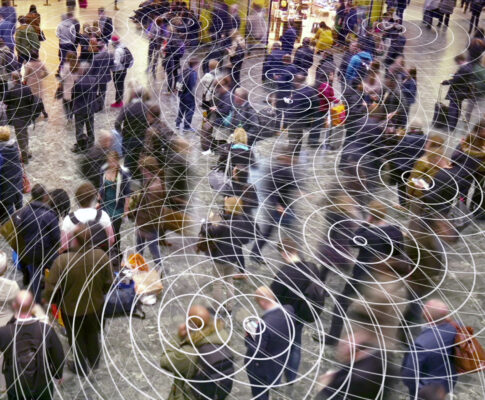Uncategorized
What is an infrared sauna?
Infrared saunas are becoming increasingly popular. But what does an infrared sauna really do?
Infrared saunas are becoming more and more widespread. Top athletes use them. Patients with chronic conditions use them. Ordinary people use them.
Unlike a traditional sauna that heats the air around you, an infrared sauna popularly warms you up “from the inside”. Technically, this is not what happens, but because infrared radiation provides a more profound feeling of warmth than a traditional sauna, this is how many describe the feeling.
So it is not the case that you are heated from the inside, as happens with the food in a microwave oven. The infrared rays just reach deeper into the tissues of the body.

Infrared sauna can accelerate healing of muscle damage.
The list of positive effects of using an infrared sauna is long, just like ordinary sauna. However, there are a few points where infrared sauna seems to be able to do even more good than classic sauna – e.g. in relation to muscle injuries.
A study from 2018 measured the frequency of injuries of 26 young football players over a year. They were put to strength training twice a week and given simultaneous treatment with infrared radiation. At the start of the study there was an injury rate of 33.3% and the players were on average unable to play / train normally for an average of 13 days. By the end of the study, those numbers had dropped to 23.3% in six days 1 . There are even some who believe that the use of infrared radiation (also as a sauna) can speed up the healing process of injuries by up to three weeks 2 !
Since a traditional sauna typically heats the air around you to 90˚C, some will find it harder or uncomfortable to breathe. It can especially be felt when the humidity rises as a result of sweating. In an infrared sauna, the heat is directed more directly at the body, and therefore the temperature in the cabin stays much lower. Our infrared cabins have, for example, a built-in alarm that gives a message if the temperature reaches above 70˚C.
You can read much more about the health benefits of sauna in our article “What does a sauna do?” .

Most infrared sauna providers recommend taking a treatment three to four days a week. However, if you are used to using an infrared sauna, there is nothing to suggest that there is anything in the way of using it daily.
How long you should be in the infrared sauna again depends on your experience and the sauna’s settings. Many providers recommend that you as a new user start out with 10 to 15 minutes at a time. As you get used to it, you can increase the time to 20-30 minutes.
Studies have been done where participants have been in an infrared sauna for up to an hour without noticing any side effects 3 – so with half an hour you are at least on the completely safe side!
Infrared saunas come with a built-in timer, so make sure you set it up correctly before you settle down.
No, there is nothing to suggest that 4 . There are some general things to be aware of at all sauna visits, both infrared and traditional (eg getting enough fluids). But there does not seem to be a difference in visiting the two types of sauna if you are otherwise healthy and well.
However, be aware that you must not use an infrared sauna if you have a pacemaker!
All electrical devices form an electromagnetic field (EMF). This also applies to the pipes and plates used in infrared saunas (you can read more about pipes and plates in the section EMF – The electromagnetic field further down). The sensitive electronics of a pacemaker can be disturbed by even a weak electromagnetic field emitted by the infrared saunas.
Talk to your doctor about using a traditional sauna if you have a pacemaker but would like to reap the beneficial effects of sauna visits.
We are exposed to infrared radiation every day. We do not refer to it as infrared though. Instead, we know it as heat from the sun.
It is part of the radiation we usually perceive as light. But humans are not able to see the infrared (IR) rays.
The part of the radiation spectrum normally used for infrared heat treatment is between 5 and 15 microns (a unit of measurement 1000 times smaller than millimeters). It harmonizes well with our body temperature.

The infrared rays are often divided into near, medium and distant IR rays (NIR, MIR and FIR). You have to be a little careful with these designations, as the areas are defined in very different ways, depending on where you look.
Within the literature describing the therapeutic effect of IR light, the following division is most often used:
- NIR : 0,75-1,5 micron
- MIR: 1,5-4 micron
- FIR: 4-1000 micron.
So it is the distant infrared rays (FIR) that are used in infrared saunas.
The infrared rays used for treatment are based on current. The current is then passed through a material which provides resistance. At the atomic plane, this happens when the electrons on their way through the material collide with atoms. The energy generated by this collision releases infrared radiation.
Infrared saunas typically use one of two different systems:
- Tubes made of glass or ceramic
- Carbon plates
In ceramic or glass pipes, the infrared rays come from metal wires inside the pipes. the wires then emit radiation through the material, much in the same way as an old-fashioned incandescent bulb.
Since the tubes are typically only a few centimeters in diameter, and the metal wire is significantly smaller than that, the radiation comes from a smaller surface area than with carbon sheets. The radiation is emitted through the entire tube, and therefore reflectors are used to send the part of the radiation that is not directed at the cabin the right way. However, during deflection, the radiation loses some of its effect, and therefore the distribution of rays is not evenly distributed in the cabin.
The pipes also use more energy to achieve the same effect as carbon plates, and these are the ones it should be about now!
Carbon plates ensure that the infrared radiation is only sent directly into the cabin. The beams are usually sent out at a 90 degree angle from the surface, so if the plate is placed vertically, the beams are sent horizontally. It provides a more even distribution of radiation, as there is no need for any reflection of the rays.
Therefore, carbon plates give a more uniform radiation. At the same time, they use less energy than pipes.
There has been a lot of talk over the years about EMF and the harmful effects some fear it can produce. So let’s just get a handle on what EMF really is.

We are exposed to EMF almost all the time in the modern world: This is because an electromagnetic field is formed wherever current is found. So when you talk on the phone, use your computer, walk past a switched on socket, etc., you are exposed to an electromagnetic field. This also applies to pipes and plates in infrared saunas, as these are powered by electricity. Infrared radiation is also part of the electromagnetic spectrum 5 .
The potential harmful effects of EMF radiation are, to say the least, debatable, and there is no definitive answer. However, the WHO (World Health Organization) continuously monitors research in this area, and their latest summary of science concludes that there is no increased risk of disease due to the many electromagnetic fields we surround ourselves with. 6 .
If you want to read more about infrared radiation, a researcher from the Niels Bohr Institute has the answer to a question about infrared sauna. You can read his answer right here (in Danish).
